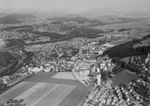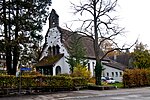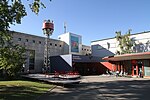Tierpark Dählhölzli
Buildings and structures in BernTourist attractions in BernZoos established in 1937Zoos in Switzerland
The Tierpark Dählhölzli, or Dählhölzli Zoo, is a public zoo in Bern, Switzerland. It opened in 1937 and is operated by an affiliated association, the Tierparkverein Bern. The city of Bern owns the zoo and provides most of its financing. It is situated on the bank of the river Aare near the historical city center. The zoo exhibits some 3,000 animals on 15 ha (37 acres) and employs a staff of 27. It also cares for the bears exhibited in the Bärengraben.
Excerpt from the Wikipedia article Tierpark Dählhölzli (License: CC BY-SA 3.0, Authors).Tierpark Dählhölzli
Tierparkweg, Bern
Geographical coordinates (GPS) Address Phone number Website External links Nearby Places Show on map
Geographical coordinates (GPS)
| Latitude | Longitude |
|---|---|
| N 46.934367 ° | E 7.449721 ° |
Address
Tierpark Bern (Tierpark Dählhölzli)
Tierparkweg 1
3005 Bern (Stadtteil IV)
Bern, Switzerland
Open on Google Maps










